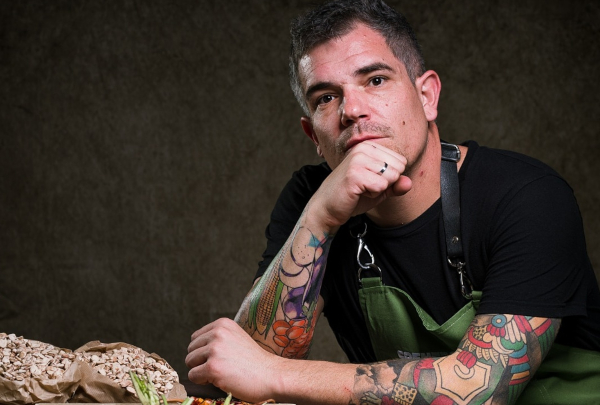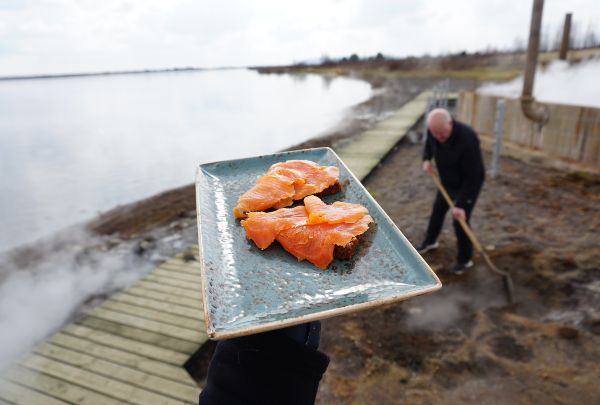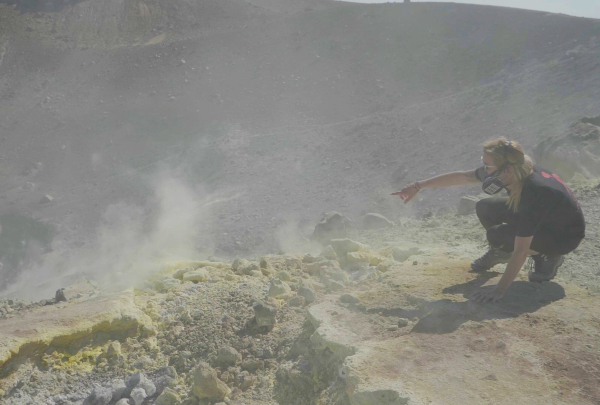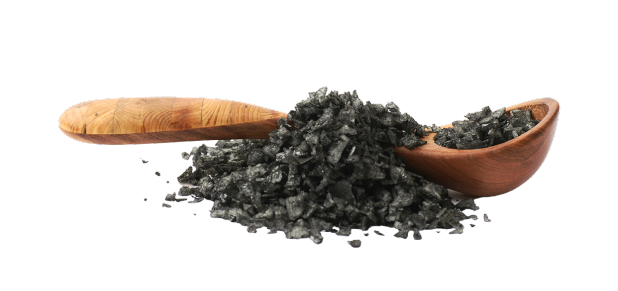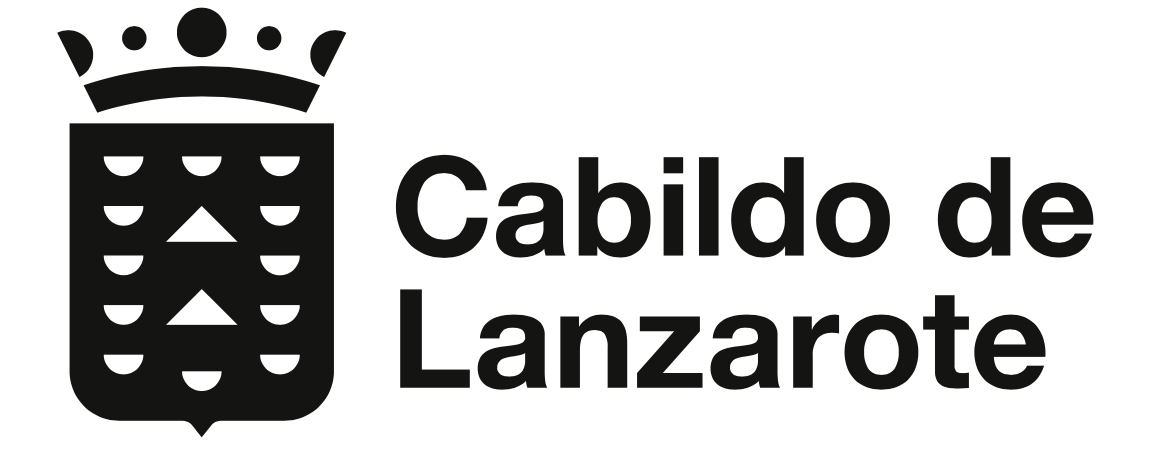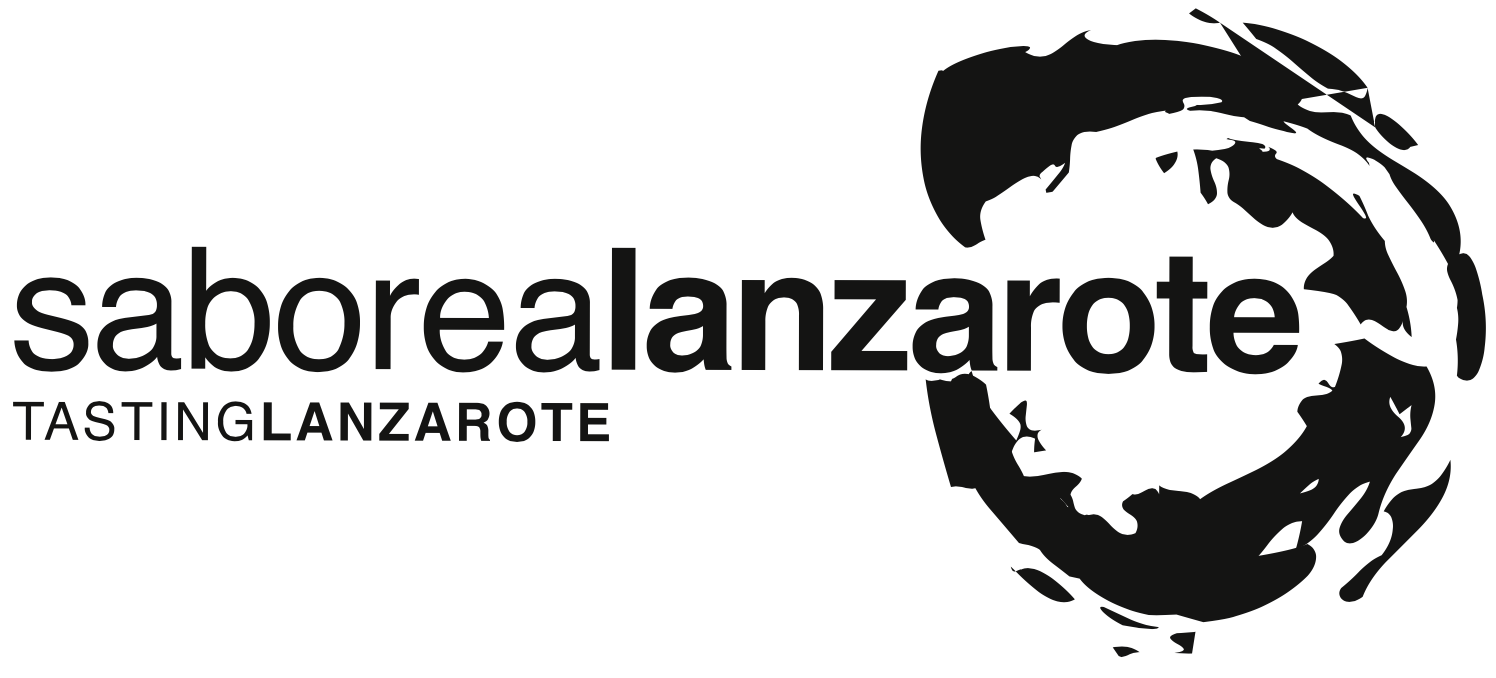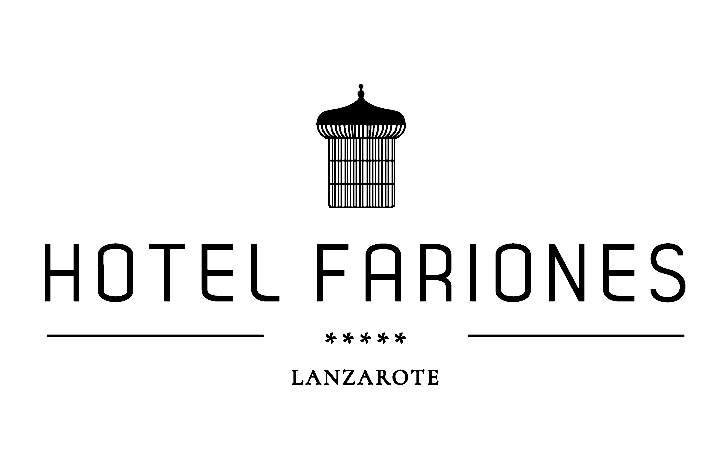Interview
Chele González: “The best vegetables in the Philippines come from land around the Taal volcano”
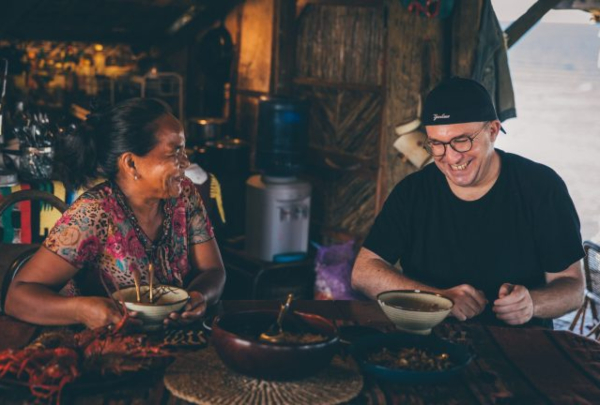
José Luis “Chele” González will be at Worldcanic to discuss volcanic and gastronomic reality in the Philippines, where since 2013 he has been running the gastronomic Gallery by Chele (ranked number 90 in Asia’s 50 Best Restaurants). The Cantabrian will be explaining the day-to-day experience of a country with more than 100 volcanoes and a vast culinary heritage which is now the chief focus of his restaurant. We talked to him 11,000 kilometres away to compare realities.
Spain's best ambassador in the Philippines. How is the country doing? How is it recovering from the coronavirus?
It's not going so well. The Philippines is a developing country, and so everything's harder. It's also a politically correct country which doesn't question the work carried out by governments the way they do in the West ... We were closed down for a while, they let us open up again, and then they closed us down again this year. Now they've opened us up again a little hastily, as if they want to follow suit behind other countries. It's all very unstable. What's important now is that I'm open for business again, and happy with everything we've gone through. Even the coronavirus. Because it could be that all this has moved the concept of fine dining forward.
Can you explain that?
It used to be that local people didn't appreciate going to a restaurant in the Philippines. They would go to Hong Kong or Singapore and spend a lot of money there, but it was like they didn't even notice the restaurants here. That's all changed now. More upmarket restaurants have emerged, which increases competition, and people have decided to go out less but have more fun, and they go for restaurants like mine to go there with their friends and enjoy an experience. They've realised that they can do this in their own country too.
What is Gallery by Chele now?
It's changed quite a bit since it opened in 2013. In general, the cooking is more like Philippines cuisine. The question they usually ask is: “Do you cook Philippines food? Yes. Because the crew is thoroughly local, because we're inspired by this territory, its techniques, its communities and its culinary traditions. But it's true that we do international cuisine too. It's not easy. Gallery is kind of our world, with our own language. Philippines cooking from the point of view of a Spanish chef, with all his baggage.
But you've certainly evolved to a more local cuisine ...
When we first opened, we were inspired by Asian cooking. We gradually began to focus on the Philippines, and increasingly on its communities. We haven't gone so radical, but we have delved more into the territory. We travel all over the world, but most particularly to every corner of this country. To find out about its products, and upgrade them.
You're a supporter of gastronomic sustainability.
I live in a country where 100 years ago the population wasn't even 10 million. Now it's 109 million. It used to have 70% of raw woodland. Now it only has 3%. If you juxtapose these two facts, you can see the environmental impact nowadays. That's why we have to raise awareness and work at it. We talk about sustainable cuisine, but it isn't sustainable because of the prices. Only people with spending power can get good produce. And we're all entitled to eat well. What can we do for everyone can eat well, and for cooking to be sustainable? That's the problem. Along with others, we've set up a deli (fast-food outlet) and a digital platform to sell the produce of local communities, with no intermediaries, putting the communities on the map. It's a step in that direction.
I heard that during the development of Gallery, at one point you were like Asia's answer to Mugaritz …
That was when we were busy focusing on Philippines cookery. We became so radical that we did, in fact, all differences considered, become a mini-Mugaritz. And we became so radical that we even began to lose our ties to our customers. Mugaritz is incredible, and it makes sense in Spain. I don't know, and I say again, taking account of all the differences, whether something similar could work in the Philippines. That's why we switched to a "friendlier" restaurant setup in 2018. Now we offer an experience where people feel comfortable. We offer a range of menus to enable diners to choose their formula, and we have an enormous garden to allow them to breathe. Our cooking is also increasingly sustainable, in harmony with nature. It has technique, but with certain assumptions. We have more elaborate recipes, and others that are easier to present to diners.
Back to your beginnings. How did someone from Cantabria end up as a pioneer of fine dining in the Philippines?
I worked at elBulli, Mugaritz and other venerated Spanish restaurants for almost a decade, and in the end I was a little browned off with haute cuisine. I liked Asia and I took the plunge by leaving the Guggenheim, where I was working at the time with Josean (Alija), and going off on holiday with no return ticket. I put my chef's coats in a suitcase, that was the beginning of an adventure, and here I am now.
As a chef, you weren't short of work ...
I had some bad times, but I knew I wanted to get on and move forward here. At the beginning I worked in hotels because I wanted to know how they operate. But it wasn't such an easy task to do that. If you have good qualifications, like I did, theoretically you come into your own at hotels, but they're keen to know whether you have any experience in that kind of catering. And I didn't. It was tough. I sent out CVs to the Philippines and Thailand, and I finally got a call from Bangkok. I didn't go because I thought, and I still think, it's a crazy city to live in ...
You're going to Lanzarote as the representative of a hugely volcanic country ...
The Philippines have more than 100 volcanoes. One of them, the Taal volcano near Manila, erupted in January. It didn't throw out much lava, but there was a lot of ash and gases. It was quite a spectacle. I'll be at Worldcanic to demonstrate the outcome of the fertility of volcanic terrain. Even though the eruption of a volcano is a catastrophe, after a few years the land eroded produces some good results for crops. This is why here, in fact, the area around the Taal volcano produces the best vegetables around Manila, because there was also some volcanic activity years ago.
In the Philippines, in addition to the Taal, we also have the Mayon volcano, the country's highest. There's a plant that grows around it ("taro"), and during our travels we noticed that in that region everything is cooked with this plant and coconut milk. Taro is an exceptional plant - it grows on the sides of the volcano, and can withstand the climate changes in our regions, for example. At Worldcanic we'll be cooking a recipe with taro based on traditional Philippines cooking, albeit from our point of view, and we'll also be explaining how the aborigines who had to leave their land after the Pinatubo volcano eruption in 1996 moved and adapted to a new reality.
Does volcano tourism exist?
Yes, of course. I don't know whether this is from the geological standpoint, but it's definitely due to the natural beauty of it all. You take a look at the Mayon now, and the landscape is incredible. It brings in a lot of people.
Spain's best ambassador in the Philippines. How is the country doing? How is it recovering from the coronavirus?
It's not going so well. The Philippines is a developing country, and so everything's harder. It's also a politically correct country which doesn't question the work carried out by governments the way they do in the West ... We were closed down for a while, they let us open up again, and then they closed us down again this year. Now they've opened us up again a little hastily, as if they want to follow suit behind other countries. It's all very unstable. What's important now is that I'm open for business again, and happy with everything we've gone through. Even the coronavirus. Because it could be that all this has moved the concept of fine dining forward.
Can you explain that?
It used to be that local people didn't appreciate going to a restaurant in the Philippines. They would go to Hong Kong or Singapore and spend a lot of money there, but it was like they didn't even notice the restaurants here. That's all changed now. More upmarket restaurants have emerged, which increases competition, and people have decided to go out less but have more fun, and they go for restaurants like mine to go there with their friends and enjoy an experience. They've realised that they can do this in their own country too.
What is Gallery by Chele now?
It's changed quite a bit since it opened in 2013. In general, the cooking is more like Philippines cuisine. The question they usually ask is: “Do you cook Philippines food? Yes. Because the crew is thoroughly local, because we're inspired by this territory, its techniques, its communities and its culinary traditions. But it's true that we do international cuisine too. It's not easy. Gallery is kind of our world, with our own language. Philippines cooking from the point of view of a Spanish chef, with all his baggage.
But you've certainly evolved to a more local cuisine ...
When we first opened, we were inspired by Asian cooking. We gradually began to focus on the Philippines, and increasingly on its communities. We haven't gone so radical, but we have delved more into the territory. We travel all over the world, but most particularly to every corner of this country. To find out about its products, and upgrade them.
You're a supporter of gastronomic sustainability.
I live in a country where 100 years ago the population wasn't even 10 million. Now it's 109 million. It used to have 70% of raw woodland. Now it only has 3%. If you juxtapose these two facts, you can see the environmental impact nowadays. That's why we have to raise awareness and work at it. We talk about sustainable cuisine, but it isn't sustainable because of the prices. Only people with spending power can get good produce. And we're all entitled to eat well. What can we do for everyone can eat well, and for cooking to be sustainable? That's the problem. Along with others, we've set up a deli (fast-food outlet) and a digital platform to sell the produce of local communities, with no intermediaries, putting the communities on the map. It's a step in that direction.
I heard that during the development of Gallery, at one point you were like Asia's answer to Mugaritz …
That was when we were busy focusing on Philippines cookery. We became so radical that we did, in fact, all differences considered, become a mini-Mugaritz. And we became so radical that we even began to lose our ties to our customers. Mugaritz is incredible, and it makes sense in Spain. I don't know, and I say again, taking account of all the differences, whether something similar could work in the Philippines. That's why we switched to a "friendlier" restaurant setup in 2018. Now we offer an experience where people feel comfortable. We offer a range of menus to enable diners to choose their formula, and we have an enormous garden to allow them to breathe. Our cooking is also increasingly sustainable, in harmony with nature. It has technique, but with certain assumptions. We have more elaborate recipes, and others that are easier to present to diners.
Back to your beginnings. How did someone from Cantabria end up as a pioneer of fine dining in the Philippines?
I worked at elBulli, Mugaritz and other venerated Spanish restaurants for almost a decade, and in the end I was a little browned off with haute cuisine. I liked Asia and I took the plunge by leaving the Guggenheim, where I was working at the time with Josean (Alija), and going off on holiday with no return ticket. I put my chef's coats in a suitcase, that was the beginning of an adventure, and here I am now.
As a chef, you weren't short of work ...
I had some bad times, but I knew I wanted to get on and move forward here. At the beginning I worked in hotels because I wanted to know how they operate. But it wasn't such an easy task to do that. If you have good qualifications, like I did, theoretically you come into your own at hotels, but they're keen to know whether you have any experience in that kind of catering. And I didn't. It was tough. I sent out CVs to the Philippines and Thailand, and I finally got a call from Bangkok. I didn't go because I thought, and I still think, it's a crazy city to live in ...
You're going to Lanzarote as the representative of a hugely volcanic country ...
The Philippines have more than 100 volcanoes. One of them, the Taal volcano near Manila, erupted in January. It didn't throw out much lava, but there was a lot of ash and gases. It was quite a spectacle. I'll be at Worldcanic to demonstrate the outcome of the fertility of volcanic terrain. Even though the eruption of a volcano is a catastrophe, after a few years the land eroded produces some good results for crops. This is why here, in fact, the area around the Taal volcano produces the best vegetables around Manila, because there was also some volcanic activity years ago.
In the Philippines, in addition to the Taal, we also have the Mayon volcano, the country's highest. There's a plant that grows around it ("taro"), and during our travels we noticed that in that region everything is cooked with this plant and coconut milk. Taro is an exceptional plant - it grows on the sides of the volcano, and can withstand the climate changes in our regions, for example. At Worldcanic we'll be cooking a recipe with taro based on traditional Philippines cooking, albeit from our point of view, and we'll also be explaining how the aborigines who had to leave their land after the Pinatubo volcano eruption in 1996 moved and adapted to a new reality.
Does volcano tourism exist?
Yes, of course. I don't know whether this is from the geological standpoint, but it's definitely due to the natural beauty of it all. You take a look at the Mayon now, and the landscape is incredible. It brings in a lot of people.

